By Claire Bacon, ACN, CNC
It’s human nature to try and simplify as many daily tasks as possible. Life is complicated enough, right? And mundane grocery shopping only gets so much time on the To-Do list. Soon enough, we fall into a rut of choosing the same brands with attractive logos and images. We forget to question what all that “green” language on the front of the label really means. Unfortunately, reading labels on the front doesn’t mean much, and can be confusing – even downright misleading. You have to turn the package around and read the back of the label to figure out what’s really inside.
Today we’re sharing information about some common issues with reading labels in the stores. Hopefully, this will clear up a lot of your confusion, and help you make informed decisions while shopping for your family.
Natural vs. Certified Organic
Bad news…the FDA doesn’t have a solid definition of what the word “natural” actually means, in terms of reading labels. Until now, the FDA has considered “natural” to loosely mean that nothing artificial or synthetic has been added to a food that would not normally be expected to be there. However, there is no enforcement on what “natural” substances are allowed, or if they even need to be named. “Natural” does not necessarily equate to “healthy”. It may include animal products or plant products that may not be listed in the ingredients. Basically, “natural” is a term that is only used for marketing, to make you think the product is healthy, even if it’s not.
On the other hand, “USDA Certified Organic” is very clearly defined by the FDA. USDA certified organic foods are grown and processed according to specific federal guidelines including:
- soil quality,
- animal raising practices,
- pest and weed control,
- and use of additives.
As for organic meat, regulations require animals to be raised to accommodate their natural behaviors. These include:
- the ability to graze on pasture,
- must be fed 100% organic feed and forage, and
- have no added antibiotics or hormones.
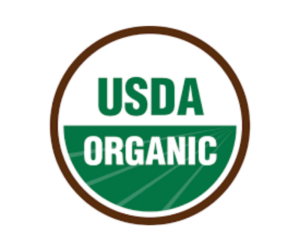
Tricky Technicalities
Even so, Certified Organic only guarantees that 95% of the product adheres to these requirements. The remaining 5% may be foods processed with additives on an approved list. When packaged products indicate they are “made with organic [specific ingredient or food group],” this means they contain at least 70% organically produced ingredients. The remaining non-organic ingredients are produced without using prohibited practices (genetic engineering, for example) but can include substances that would not otherwise be allowed in Certified Organic products.
Vegetarian-Fed Eggs
Chickens are not meant to be vegetarian, yet the term is so trendy and health-oriented that egg companies are promoting it on the label. Chickens are meant to scratch around in the dirt for insects and worms, even small lizards and frogs, for their protein. In addition, chickens love lettuces, seeds, fruits and vegetables. Backyard chickens should eat no more than a small percentage of grains. But “vegetarian fed” chickens are fed nothing but grain and soy – cheap GMO materials that fatten the chicken quickly due to estrogenic effects, and leave the eggs with an altered, inflammatory Omega 3:6 ratio. This is why we recommend Tuna Omega 3 Oil – to counteract the imbalance in the foods we eat. Omega 3s are so important – and they come in a chewable form for the kids!
“Vegetarian fed” is a warning sign that the chickens did not get to spend any time on pasture being happy birds. Look for “pasture raised” or “free range” eggs (just slightly better) or buy directly from your local farmer or CSA (the best choice you can make).
You can check with localharvest.org to find convenient access to locally grown organic food in your area.

Nitrates & Nitrites
These are preservatives in processed meat used to prevent bacteria growth and to maintain color. Naturally occurring compounds in the nitrates and nitrites combine with protein “amines” to create nitrosamines. These are cancer-causing compounds that adversely affect the digestive tract. They may contribute to many forms of cancer, not just in the colon. You can find excess nitrates and nitrites in cured meats (bacon, salami, sausage and hot dogs) and some low-quality deli meats. Note that there are some nutritious foods such as spinach, beets and leafy vegetables that are naturally high in nitrates; however, human studies on nitrate intake from vegetables have found either no association with or a decreased risk of cancer.
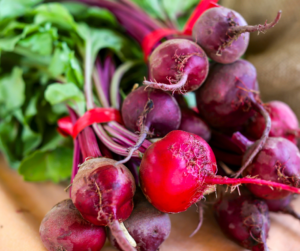
BHA & BHT
These are chemical preservatives that preserve fats and oils. Many other countries ban the use of BHA and BHT, but U.S. food regulations still allow them. The National Toxicology Program classifies these as “reasonably anticipated to be a human carcinogen.” In addition, the EU classifies BHA as an endocrine disruptor. At higher doses it can lower testosterone and the thyroid hormone thyroxine and adversely affect sperm quality and the sex organs of rats. A wide variety of foods contain BHA and/or BHT, including chips and preserved meats. Strive to avoid preserved meats and substitute raw vegetables for chips.
Reading Labels for Propylene Glycol
Propylene glycol is used as a thickening agent to absorb water. It aids in the processing of foods improving their texture, flavor, appearance, and shelf life. You’ll find it in many packaged foods such as:
- drink mixes,
- dressings,
- dried soups,
- cake mix,
- soft drinks,
- popcorn,
- food coloring,
- fast foods,
- bread, and
- dairy products.
Propylene glycol can cause central nervous system depression and kidney damage. By consuming a fresh, healthy, whole foods diet, you can avoid most sources.
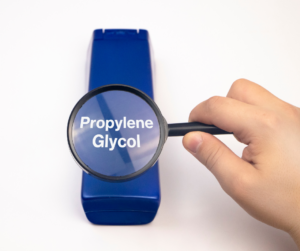
Dimethylpolysiloxane or Dimethicone
This is one of several types of silicone oil. It is present in contact lenses, medical devices, and many shampoos to make hair shiny. You can find it added to cooking oils to prevent oil splatter. As a result, small quantities exist in many fast-food items – in breads, French fries, milkshakes, and smoothies. Avoiding fast food places entirely is the best way to eliminate these toxins!
Partially Hydrogenated and Hydrogenated Oils
Food manufacturers hydrogenate liquid vegetable oils to make them more solid and shelf stable. In partial hydrogenation, the resulting fats are semi-solid at room temperature. In full hydrogenation, the oils become completely solid. The problem with partially hydrogenated oils is that they contain trans-fat, which causes inflammation, thereby raising LDL (bad) cholesterol and lowering HDL (good) cholesterol. In contrast, fully hydrogenated oils become saturated fats, but they contain no trans-fat. Some products to be wary of are:
- cooking oils,
- commercial peanut butter,
- Jiffy cornbread mix, and
- ready-made cake and pancake mixes.
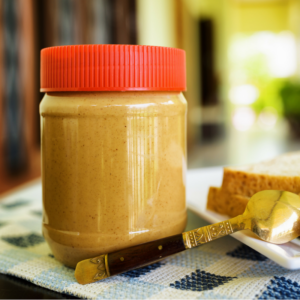
Reading Labels for Artificial Colors
Artificial colors impact children’s brain activity, and cause hyperactivity and behavior problems, attention disorders, and food sensitivities. Internationally, the U.S. is way behind other countries on its artificial dye policies. The UK has imposed a voluntary ban on several dyes because of their potential harm, and the EU places warning labels on products containing dyes.
You can find it in brightly colored candy, breakfast cereals, baked goods, sodas, and some meat products like hot dogs and sausages. Avoiding food dyes is just one of the benefits of choosing high-nutrient whole foods instead. There are many healthy superfoods your child will probably eat – if you just give them a chance!
Potassium Bromate
Manufacturers use Potassium bromate to strengthen bread, muffin and cracker dough and help it rise during baking. It is a known carcinogen (according to the state of California). Not only that, but it can cause tumors, is toxic to the kidneys, and can cause DNA damage. Baking converts most potassium bromate to non-carcinogenic potassium bromide, but research in the UK has shown that bromate residues are still detectable in finished bread-like products. The UK, EU, and Canada all prohibit the use of potassium bromate in food. The US, however, still allows it to be added to flour. Look for potassium bromate in commercially produced bread, crackers, pastries and muffins. It’s bad because it is toxic to the thyroid and causes underactivity of thyroid hormone production.

Reading Labels for Carrageenan
Carrageenan is a thickener to improve the texture in dairy alternatives. You can find it in foods such as almond milk and soy milk, as well as ice cream, yogurt, and cottage cheese. Products with carrageenan might have a “natural” label, but studies show it may promote:
- inflammation,
- bloating,
- irritable bowel syndrome (IBS),
- glucose intolerance,
- colon cancer, and
- food allergies.
Better avoid it if you can!
MSG – Monosodium Glutamate
MSG is a flavor enhancer that is commonly added to Asian food, canned vegetables, soups, and processed meats. The FDA recognizes MSG as “safe”, but its use remains controversial. Adverse reactions to foods containing MSG include:
- headache,
- flushing,
- sweating,
- numbness/burning in areas,
- heart palpitations,
- chest pain,
- nausea, and
- weakness.
Symptoms may be mild, or could put you to bed for a few hours. It is best to avoid foods containing MSG to not experience these reactions.

Helpful Supplements:
Sometimes, a liver detox product may be useful to counteract symptoms and flush the bad stuff out of your body. And you may like a few other digestive specialty products. A few of our favorites…
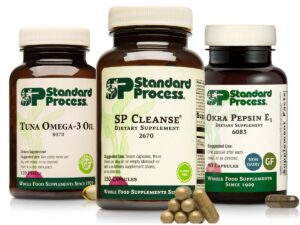
- SP Cleanse: The Standard American Diet (SAD) is infused with thousands of harmful substances, forcing our bodies to detox everything we’re ingesting on a daily basis. SP Cleanse contains herbs like Juniper berry, Spanish black radish, Burdock root, Collinsonia root, and more to help your liver naturally detox the chemical toxicity we can’t avoid.
- Okra Pepsin E3: This handy digestion aid contains special enzymes mixed with the sticky mucilaginous part of Okra to clean up accumulated food waste in our small intestine. Pretty much everyone in America could benefit from a bottle of Okra Pepsin once a year!
- Tuna Omega-3-Oil: Rancid oils like canola, soybean, and vegetable oil are way too common in our everyday diets – throwing off our Omega 3:6 fatty acid ratio. Omega 6s are necessary, but not to the extent we consume them in America. It’s the easiest thing you could do to combat daily inflammation. Supplementing with a 3rd party tested Omega 3 oil supports healing, brain function, immunity, and cardiovascular health.
Looking ahead…
Looking ahead, we’ll have more info all month about upgrading your holiday shopping and meals.
Getting the toxicity out of your holiday meals will have significant impacts to your health! Keep an eye out for the tricks of the trade!


